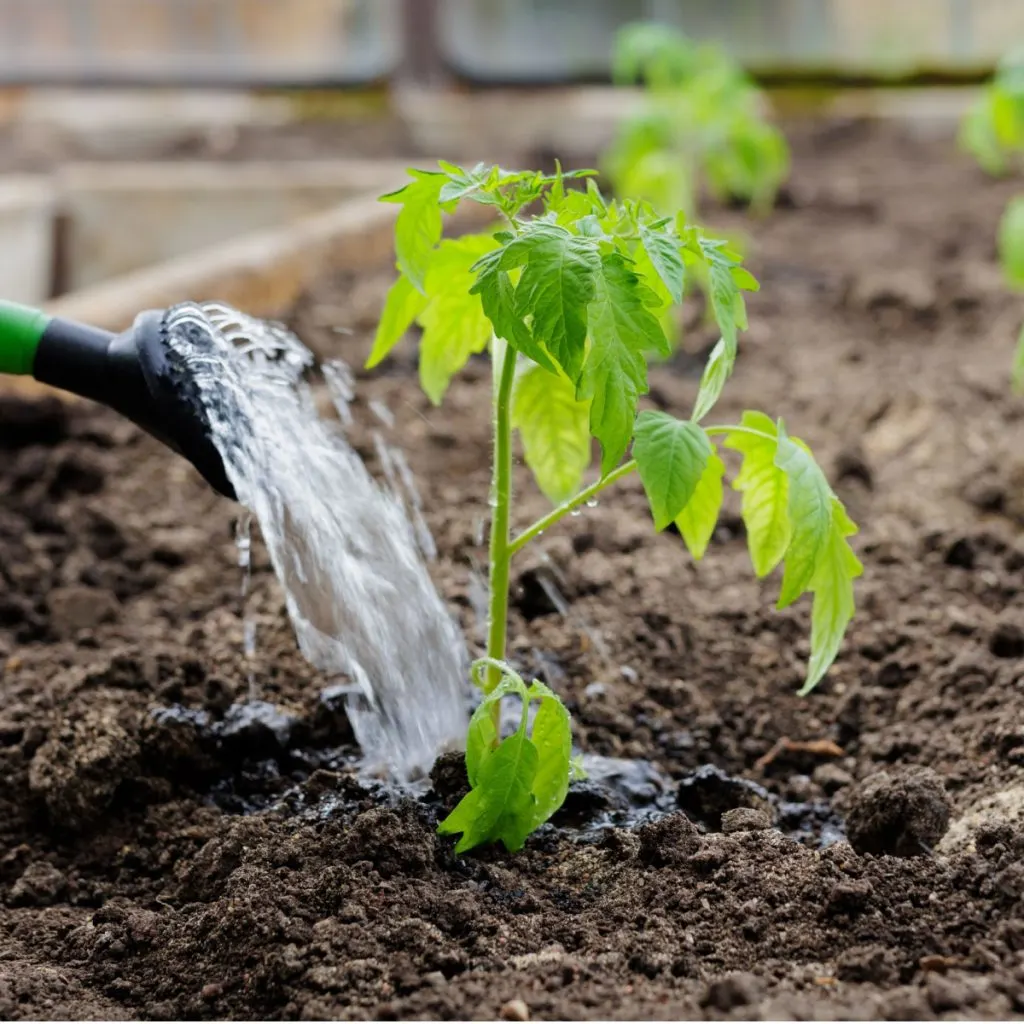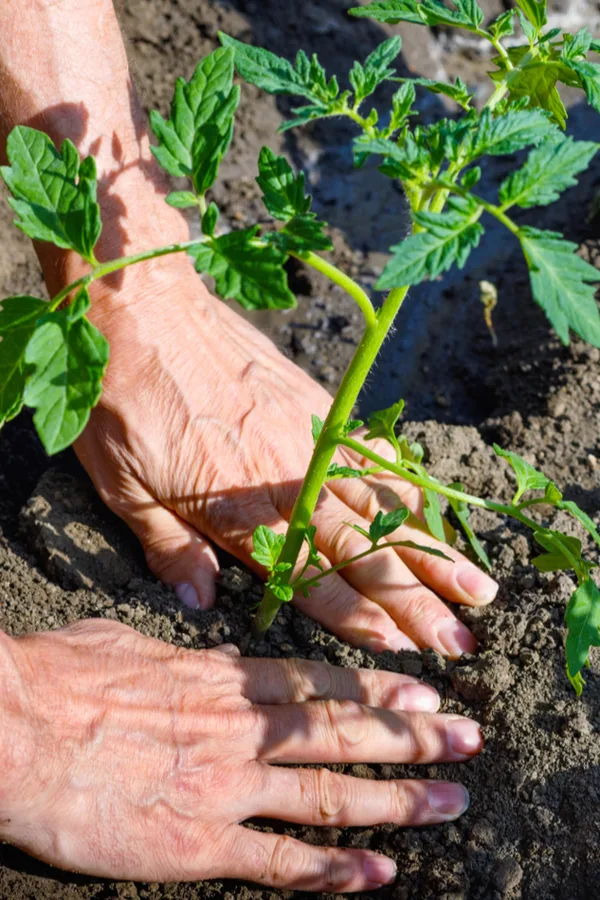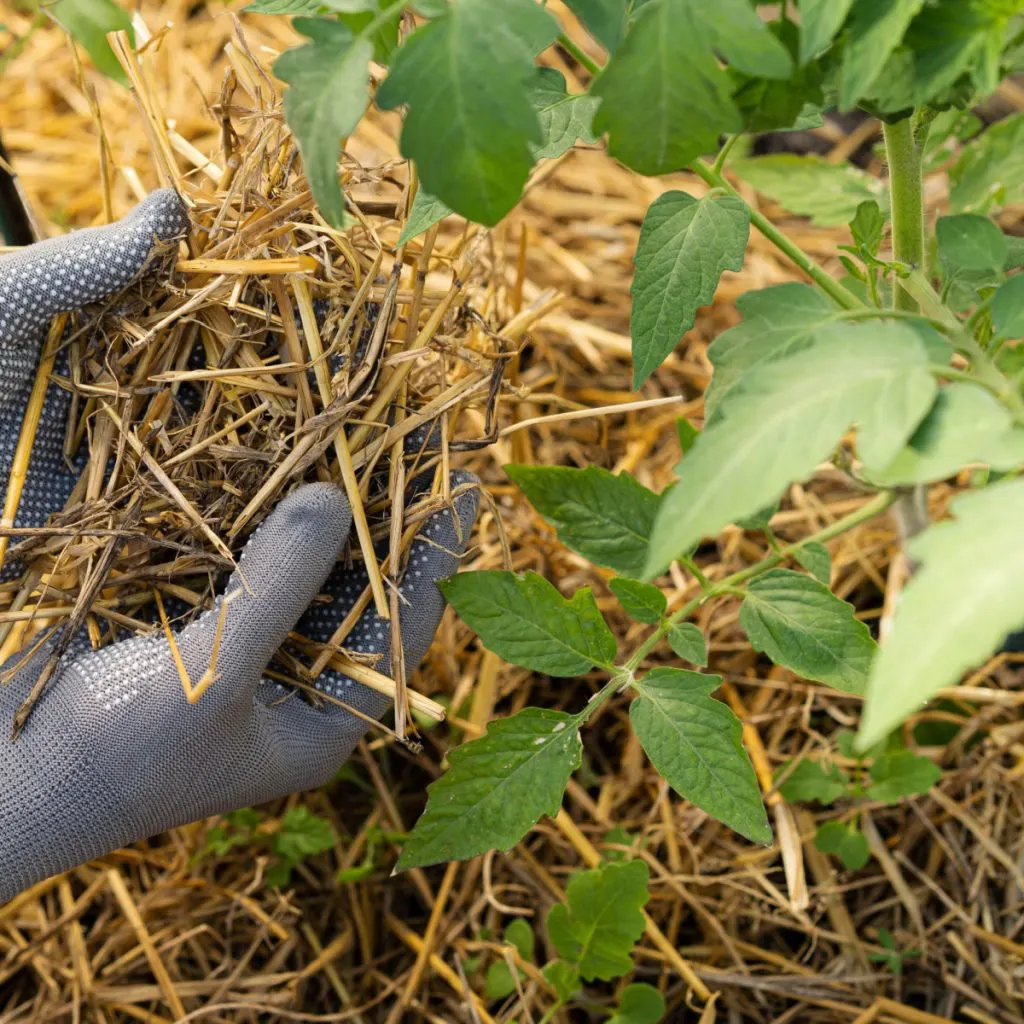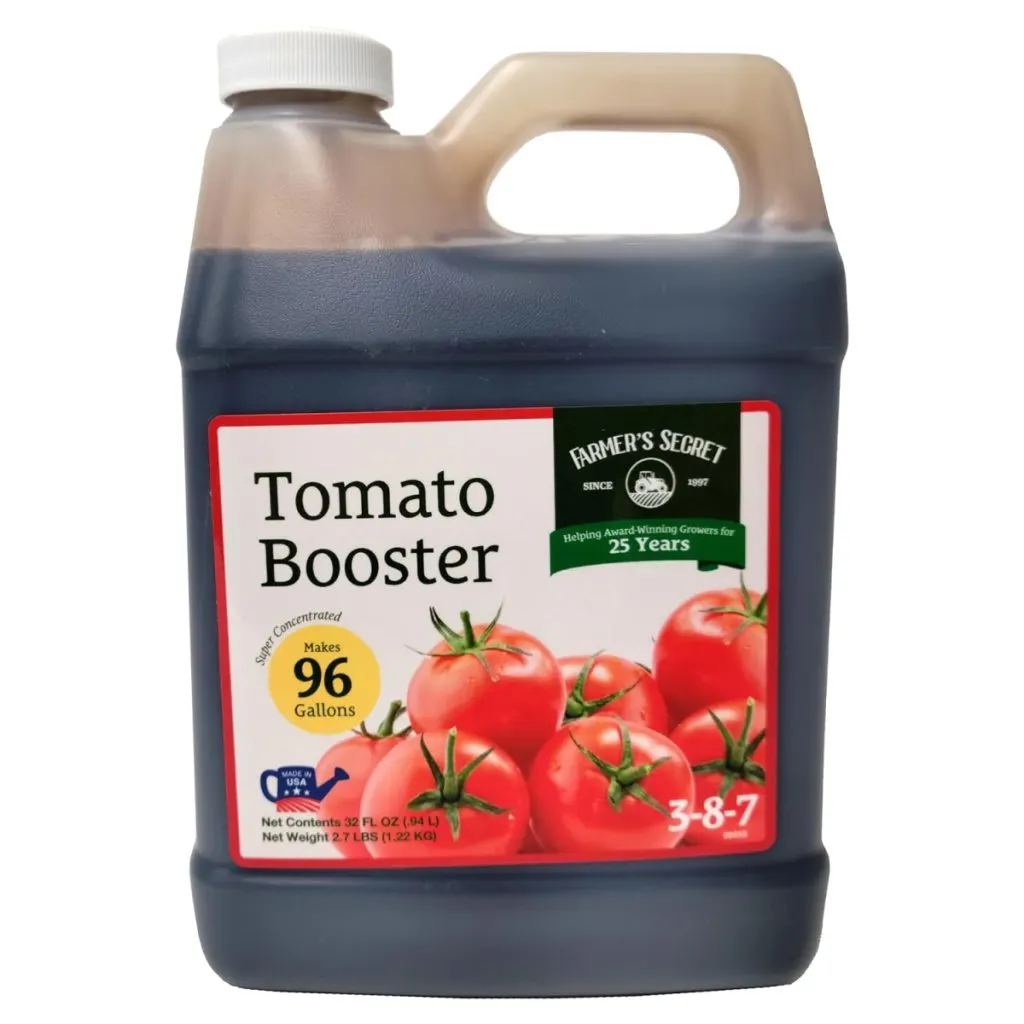Looking to give your newly planted tomato plants a big jump start to get them off and growing fast?
Whether you grow tomato plants in a traditional garden setting, raised beds, or in 5 gallon buckets, containers or tomato bags, the first six to eight weeks of their life outdoors is critical to their long term success.
It is absolutely vital that a tomato plant develops strong roots, a healthy stem structure, and thick, vibrant foliage during the first month or two. Unfortunately, without a strong root and stem structure, tomato plants can’t absorb the energy they need from the soil and sun. And the longer they lag behind in growth, the less likely it becomes your plants will produce a good harvest.

The Importance Of Strong Roots & Foliage – How To Jump Start Young Tomato Plants
Strong roots help a tomato plant create a solid anchor in the soil. They allow it to withstand wind, rain, and many of the other perils that mother nature can bring. Even more, a good root system helps to soak in the nutrients and moisture needed for steady and strong growing habits.
Plain and simple, the more extensive and robust a tomato plant’s roots are, the more easily it can absorb the power it needs to make it grow even stronger.
Along those same lines, strong stems and thick canopy of leaves provide even more strength to the plant as is it matures. With a strong leaf structure, the plant can use the power of photosynthesis to its advantage, increasing its ability to turn the sun’s rays into energy for the plant. And that powers the blooms that eventually produce those amazing tomatoes!
So how do you help your tomato plants create stronger roots early in the growing season? It all comes down to providing three simple but very key needs for your plants during those critical first few weeks outdoors.

3 Simple Secrets To Jump Start Tomato Plants!
#1 Water For Success!
One of the biggest issues for young tomato plants is getting the proper amount of moisture they need for strong growth. And that can be not getting enough, or surprisingly, getting too much. In fact, more often than not, young tomato plants suffer from over watering more than under watering.
In late spring and early summer, the cooler temperatures and more frequent rains often leave tomato plants water-logged. Making matters worse, many gardeners still feel the need to water their plants on a daily basis.
Unfortunately, once roots become saturated, they have great difficulty absorbing nutrients from the soil. Unless you live in a desert-like environment, established tomato plants do not need to be watered every day. It actually harms them way more than helping them.
Only water your plants when the soil is beginning to dry out down by the roots. Always check the soil a few inches down for moisture before watering. Just because the surface is dry, it does not mean the root area is.
This is one time where having an inexpensive, instant-read moisture meter can be of great help. You can simply stick the probes down in the soil and instantly know the moisture level. Affiliate Product Link: XLUX Long Probe Deep Use Soil Moisture Meter
Listen In Below To Our Podcast On How To Get Young Tomato Plants Growing Fast!
Water Deep When Watering
When you do water, it’s important to water deep. Frequent, shallow watering creates tomato plants with a weak root structure. The roots stay near the surface of the soil because they get used to the constant supply. Instead, water slow to allow the water to go deep in the soil.
This allows the roots to grow down looking for moisture. In the end, you develop stronger plants with a more extensive root structure. Not only do bigger roots absorb more nutrients, they also help anchor the plant against wind and storms.
This is also why when you plant, you always want to plant your tomatoes deep! See our article: How Deep To Plant Tomato Plants – The Simple Secret To Grow Your Best Tomato Crop Ever!
#2 Fertilizing Your Plants With Perfect Power – 3 Secrets To Jump Start Young Tomato Plants
Young tomato plants need a lot of nutrients to grow strong roots, stems and foliage. Unfortunately, quite often, they struggle to obtain enough nutrition in the early phases of growth.
The biggest reason for the struggle is that they simply don’t have an extensive root system in place yet to gather the nutrients. And that is where helping plants out with a dose of fast-absorbing energy can make all the difference!
Tomato plants, as many vegetable plants do, often go through a bit of a lag in growth the first few weeks after going into the ground. But by giving them a nutrient boost in the form of a liquid fertilizer, you can jump start a good early growth spurt.
Why Liquid Fertilizers Are Best For Tomatoes – 3 Secrets To Jump Start Young Tomato Plants
So why use liquid fertilizers in place of granular types? Because liquid fertilizers act fast! They absorb both through the roots and foliage of a tomato plant, and they provide nutrients quickly, helping struggling plants to perk up in a flash.
To help young or struggling tomato plants, apply a dose of liquid fertilizer every 7 days for two to three weeks. Compost tea, worm casting tea, or an all-purpose liquid organic fertilizer are all excellent choices.
Once your plants have begun to respond and green up, back off the feedings to every two weeks to prevent your plants from growing too much foliage in lieu of blooms and fruit. Affiliate Fertilizer Link: Farmer’s Secret Tomato Booster Fertilizer (32oz)
#3 Mulch Your Plants! 3 Secrets To Jump Start Young Tomato Plants
Finally, always mulch your plants right from the start! One of the best ways to help your plants stay healthy and strong is with a thick layer of organic mulch. Leaving the soil around your plants bare can cause all kinds of issues for tomato plants.

For starters, it allows the soil to dry out too quickly. That not only starves plants of the moisture they need, but creates the need for you to have to water more frequently.
Bare soil also allows weeds to take hold. Weeds that steal the same nutrients from the soil that your tomato plants need to grow and produce. That same layer of mulch also helps to keep the soil temperature regulated, keeping your plant’s roots from getting too cool or warm – both of which can stunt growth.
Finally, mulch helps to protect your tomato plants from soil borne disease. Soil borne diseases such as blight can infect plants when dirt splashes on plants. A thick layer of mulch keeps that from occurring, protecting your plants in the process.
For best results, mulch your plants with a thick four to six inch layer of organic material. For this, straw, grass clippings or shredded leaves all work great. It will protect your tomato plants and add nutrients to your soil as it breaks down.
For even more power, mulch your plants first with a few inches of compost around the plant’s surface. This will help leach even more nutrients into the soil whenever it rains or you water.
Here is to giving your tomato plants the jump start they need to big growth. And even more, a big harvest this summer! If you are wondering how to use wood ashes from your fireplace to help boost your plants, be sure to check out Planting Tomatoes With Wood Ashes – The Secret To Getting Tomatoes Off To A Fast Start!
This Is My Garden
Follow Our Facebook Page For Great Gardening Tips And Advice! This Is My Garden Facebook Page
This Is My Garden is a garden website created by gardeners, for gardeners. Jim and Mary Competti have been writing gardening, DIY and recipe articles and books and speaking for over 15 years from their 46 acre Ohio farm. They publish three articles every week, 52 weeks a year. Sign up today to follow via email, or follow along!

